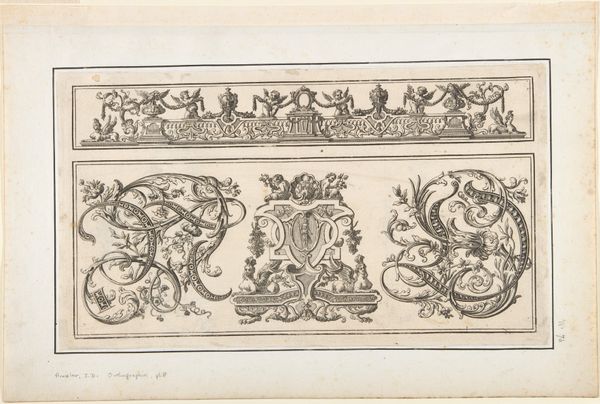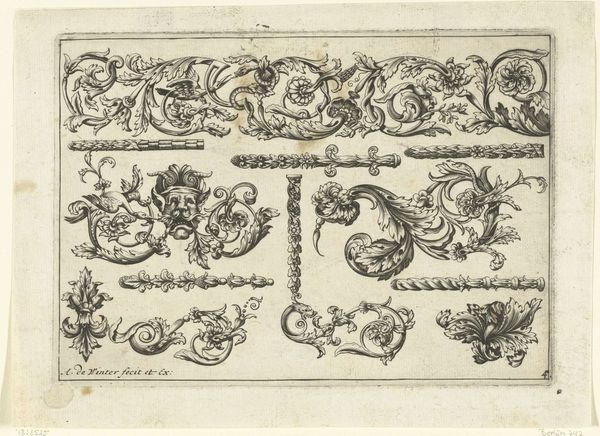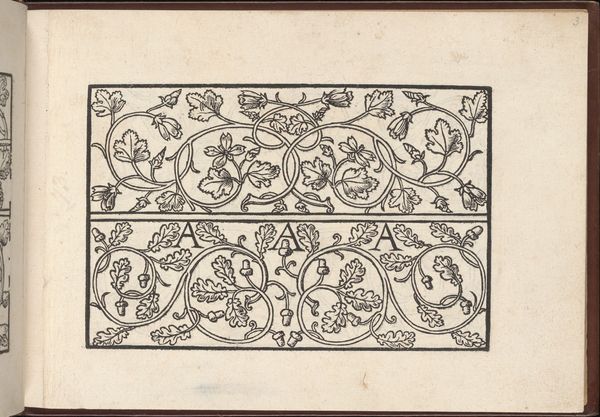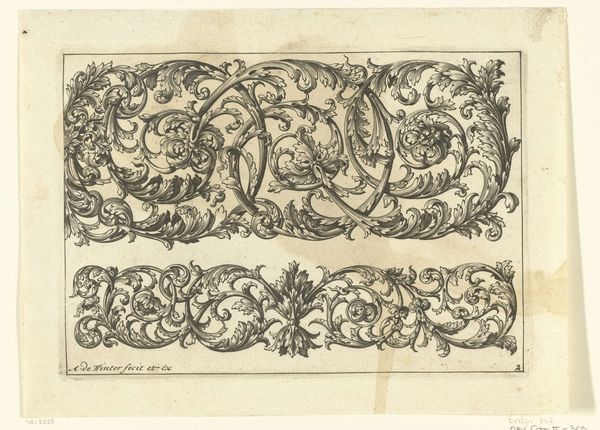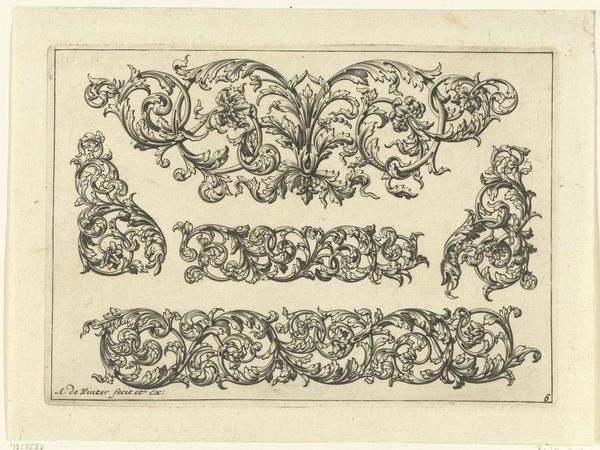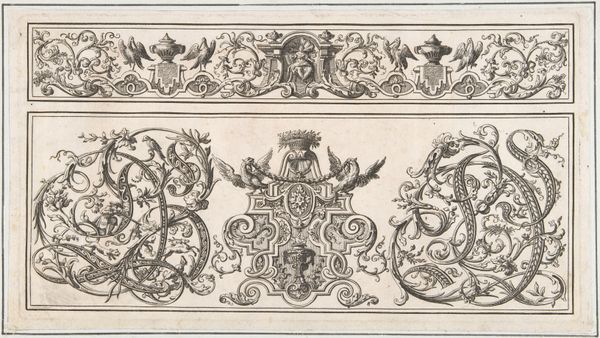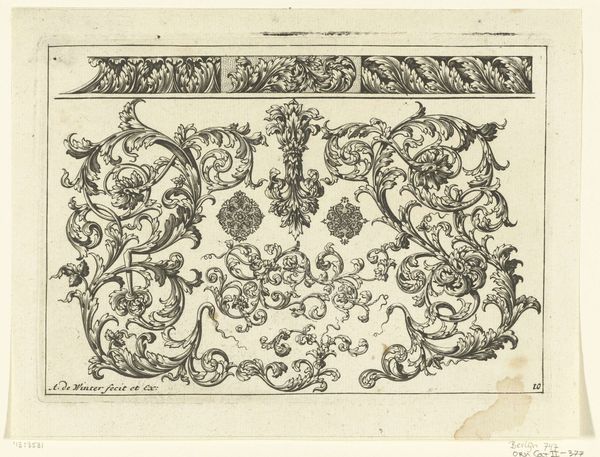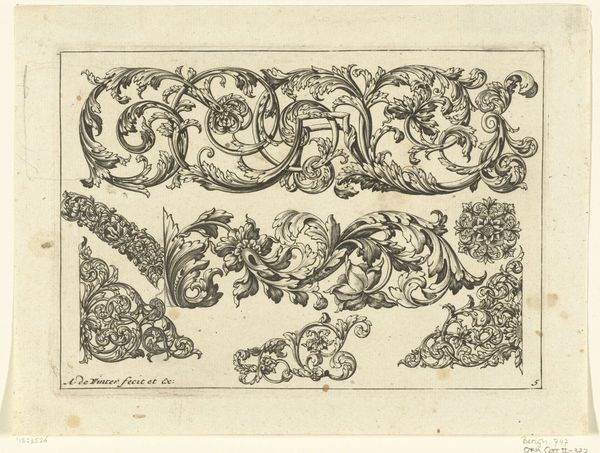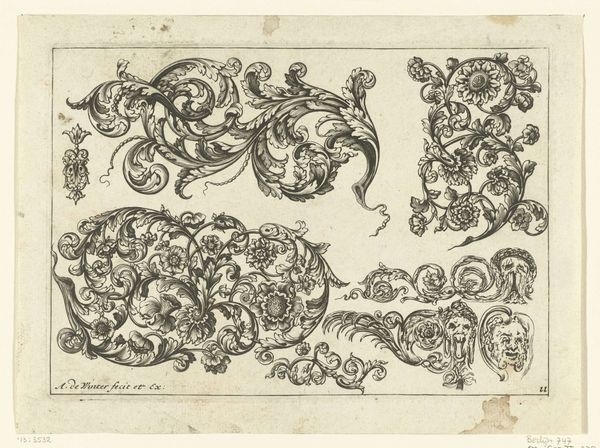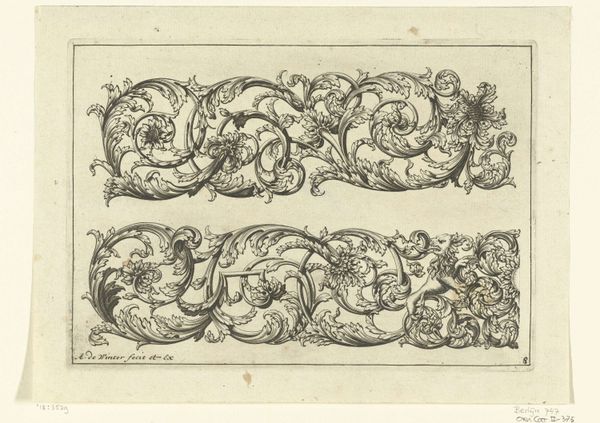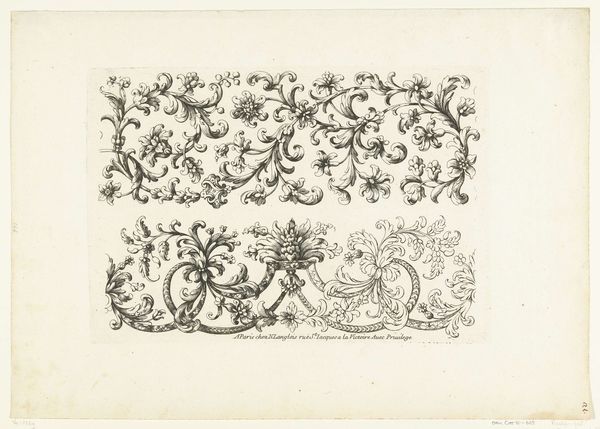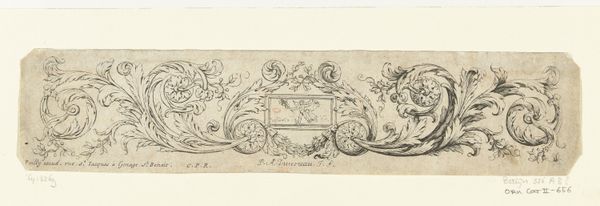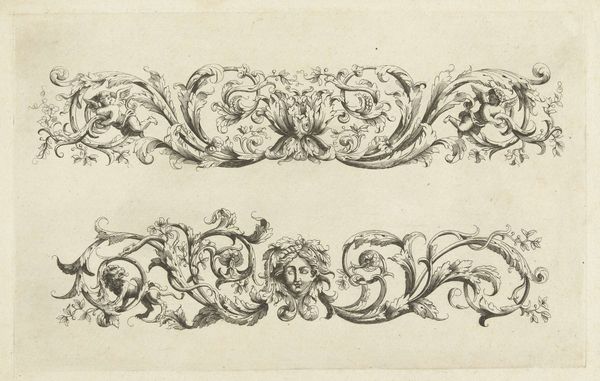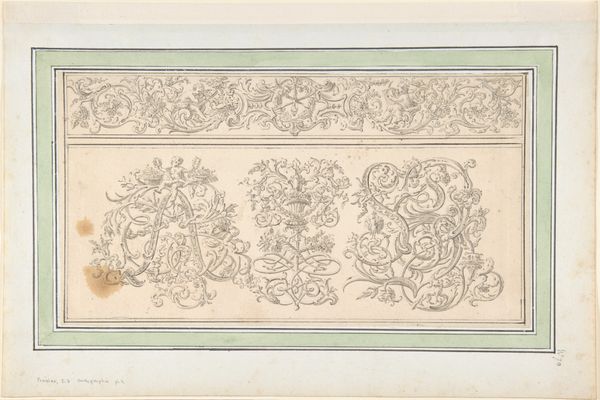
drawing, print, engraving
#
drawing
#
baroque
# print
#
form
#
geometric
#
line
#
decorative-art
#
engraving
Dimensions: 5 15/16 x 11 in. (15.1 x 28 cm)
Copyright: Public Domain
Curator: This intriguing print is plate 2 from “Orthographia,” a work dating roughly from 1680 to 1737, by Johann Daniel Preissler. Editor: It feels immediately…decorative. A controlled riot of line, looping and swirling within a tight frame. Curator: Indeed. Preissler was clearly working within a well-established tradition of ornamental prints. The "Orthographia" was created to provide models for artisans. Consider how patterns like these would have shaped decorative arts, furniture design, even architectural details of the period. The print disseminated stylistic choices and contributed to design standards. Editor: You see a template. I see, primarily, a tension between the rigid geometry implied in those letterforms and the organic profusion of the foliate and zoomorphic details erupting around them. Notice how the initial 'A' on the left seems almost weighed down by the cherubs perched atop. Curator: Absolutely. The weight and extravagance you're noticing reflect the Baroque aesthetic, but it also signifies something deeper about the role of art within society. The display of wealth and cultivation! These intricate patterns are not merely decorative; they represent a specific socio-economic position. Their popularity highlights the influence of design on expressing prestige. Editor: Look at how the forms twist. The engraved lines articulate form, implying volume and depth. The middle image looks almost like a symmetrical Rorschach blot—the shapes are carefully balanced, yet the detailing avoids exact mirroring, giving a liveliness to what could have been static. Curator: An astute observation. And consider the way such prints would have been consumed—bound in volumes, consulted in workshops. Art wasn't just viewed; it was actively put to work, shaping the world around it. The act of replication and variation made these designs available beyond the court or the elite households. Editor: Right! And these ornamental elements – leaves, fruits, cherubs, all rendered with this exquisitely precise line, speak of the inherent human impulse toward play, the urge to soften stark functionality with flourishes of beauty. It is a document of cultural production! Curator: It makes you realize the power dynamics that decide aesthetics in different environments. We must learn to view it as both a reflection of its period and a driving force behind the visual landscape of its time. Editor: Yes, even within these formal boundaries, we find ingenuity. And the hand of a skilled draftsman.
Comments
No comments
Be the first to comment and join the conversation on the ultimate creative platform.
